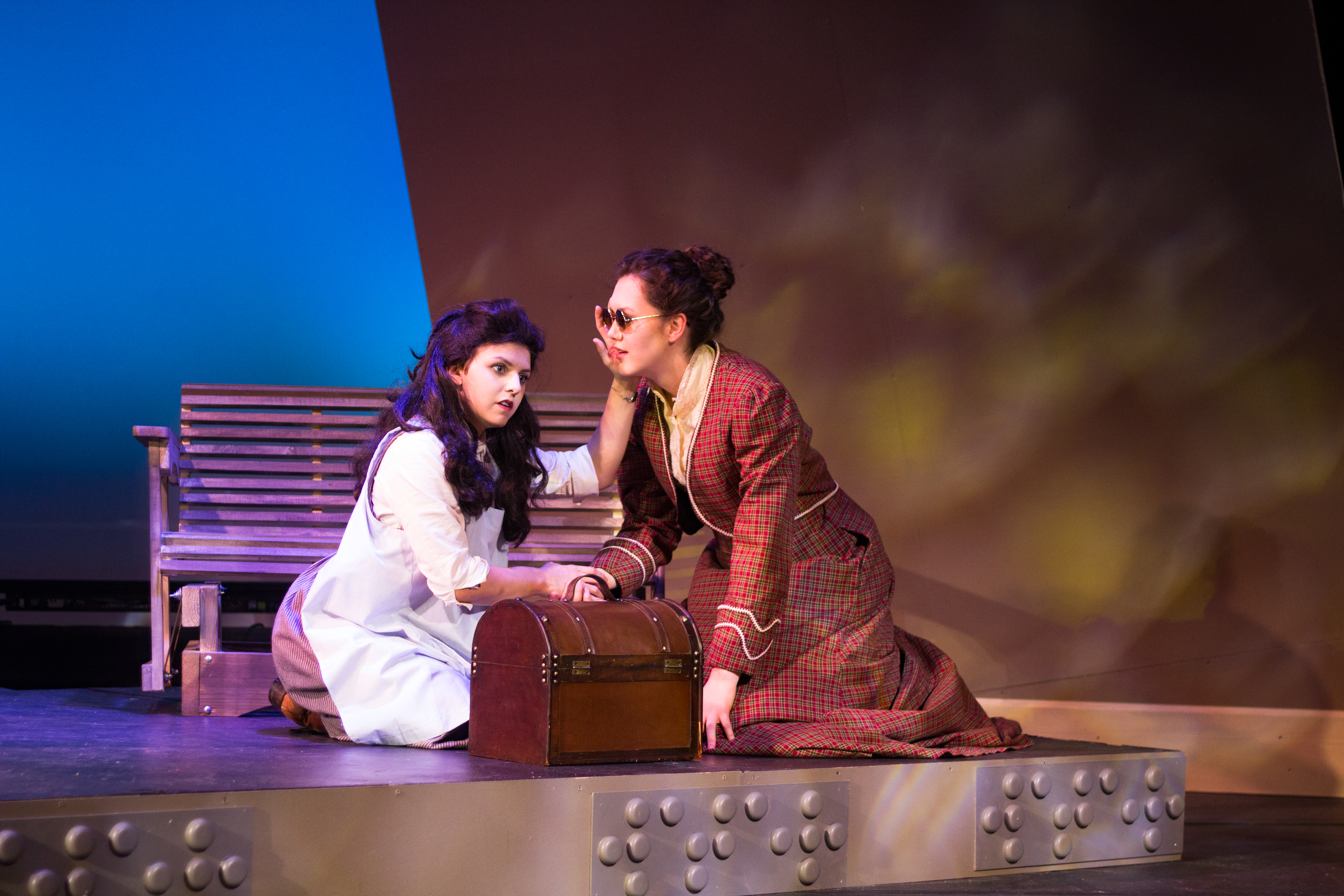Last Friday evening, The Miracle Worker debuted in Lipscomb’s Shamblin Theatre to kick off opening weekend for the play as well as the theatre department’s first show of the season.
The story follows Anne Sullivan, a young woman who takes on a teaching job in the Keller household. Within the household is their six year old daughter, Helen Keller. After battling an illness in her early years, Keller is left blind, deaf and mute.
During the performance, audience members can spot senior Sarah Johnson as Helen Keller and junior Brooklyn Chalfant as Anne Sullivan. Other notable mentions include sophomore Logan Dozier as Captain Keller, senior Haley Sue Pearson as Kate Keller and sophomore Johnathan Killebrew as James Keller.
Through an emotionally engaging performance, Lipscomb’s Theatre Department tackles the importance of radical love, patience and true determination in the face of adversity.
“Love is one of the big themes,” Chalfont said. “Anne has to learn to love again, she loved her brother and then it broke her heart because he died. At the end of the play when she says, ‘I love Helen forever and ever’ she is choosing to love again.”
Keller is trapped in her own soundless world, unable to convey her thoughts effectively, causing her to become violent at times. Her family, who easily takes pity on her circumstances, places her in this “box” and never makes the effort to free her mind and spirit.
“The physicality was hard to find a place that married what I assume it is like to be deaf and blind, but also pull back from mocking any sort of physical handicap,” Johnson said. “I think the most challenging part was not only getting the audience to fall in love with her, but getting them to believe that she was so intelligent.”
Throughout the course of the play, Sullivan is able to pry open the “box” that is Keller’s mind and give her the opportunity to free herself in a capacity that is new and unfamiliar to those around her.
“Learning the fight between her and Helen was very difficult,” Chalfont said. “The stamina of fighting someone for fifteen minutes in a corset and boots was kind of a difficult thing.”
Due to the storyline and amount of sign language used in the play, the theatre department paired with Bridges for the Deaf and Hard of Hearing. Beth Moss and Laura Brown, two interpreters from Bridges joined the cast closer to the performances in order to work with the students and offer feedback.
The cast was also visited by Mike Helms, a deaf man who works for Bridges. Along with feedback to the students, Helms also offered advice to the interpreters on how to make themselves more visible to the audience.
“Most of the people who were translating for us had various experiences with deaf people,” Chalfont said. “For me, they were able to explain what it might be like to work with someone who was deaf.”
Johnson mentioned that she worked with the translators from Bridges on a variety of different aspects for her character, but specifically on ‘deaf voice’ so as not to appear mocking.
In addition to coming in for feedback and advice, Bridges also sponsored a special shadow interpreted performance on Saturday night. There were 136 people in the audience for the interpreted performance, and about three-fourths of them were deaf or hard of hearing.
“Shadow interpretation is when interpreters follow characters around on stage, to interpret what they say,” Scott Baker, director of marketing and community outreach for the College of Entertainment and the Arts, said. “It collapses the distance between the delivery and the message. It is a far more dynamic interpretation that is more accurate and engaging.”
Baker was one of the three shadow interpreters for the evening and estimated that he spent approximately twenty hours working on the staging and sign language required.
The shadow interpretation was not the only form of alternate viewing experience offered Saturday night. For those who were hard of hearing, the play was streamed directly into their hearing aids. The audience also housed a blind-deaf in the house that night and the play was signed directly into the individual’s hands in order for him or her to feel the hands and comprehend the play.
“The most rewarding part is knowing that the audience was very closely able to follow the story,” Baker said. “[There was] lots of nodding and tears of understanding at the end. The staging [however] is the most difficult part. Adding three new bodies to a scene is a challenge of where to place everyone so the action can continue unimpeded.”
For those who are interested in catching The Miracle Worker before it concludes, tickets are still available for Friday and Saturday’s performance at 7:30 PM and Sunday’s at 2:30 PM.
Photos by Becca Risley

